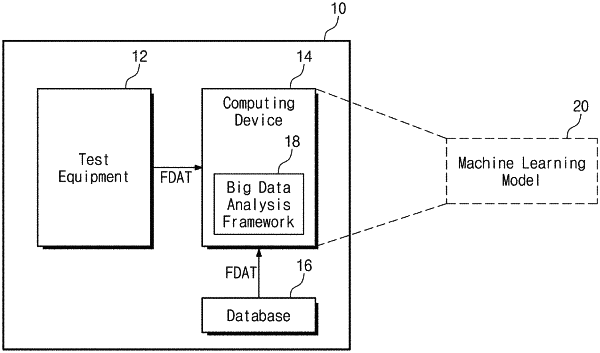| CPC H01L 21/67276 (2013.01) [G05B 19/41865 (2013.01); G05B 2219/32291 (2013.01); G05B 2219/33034 (2013.01); G05B 2219/45031 (2013.01)] | 20 Claims |

|
1. A non-transitory computer-readable medium storing program code for optimizing a semiconductor fabricating process, the program code including a framework and a machine learning model, the program code, when executed by a processor, causing the processor to:
input fabrication data including a plurality of parameters associated with the semiconductor fabricating process to the framework to generate a first class for analyzing the fabrication data, wherein the parameters are different from one another;
extract a first parameter targeted for analysis a second parameter associated with the first parameter from the plurality of parameters to generate a second class for analyzing the first parameter as a sub class of the first class;
modify the first parameter and the second parameter into a data structure having a format appropriate for storage in the second class;
perform data analysis on the data structure to calculate a correlation between the first parameter and the second parameter;
transform the first parameter and the second parameter into a tensor when the correlation exceeds a threshold and otherwise transform the first parameter and a third parameter of the parameters associated with the first parameter into the tensor;
input the tensor to the machine learning model to perform a machine learning algorithm for predicting a characteristic of the semiconductor fabricating process; and
change the semiconductor fabricating process based on the predicted characteristic.
|